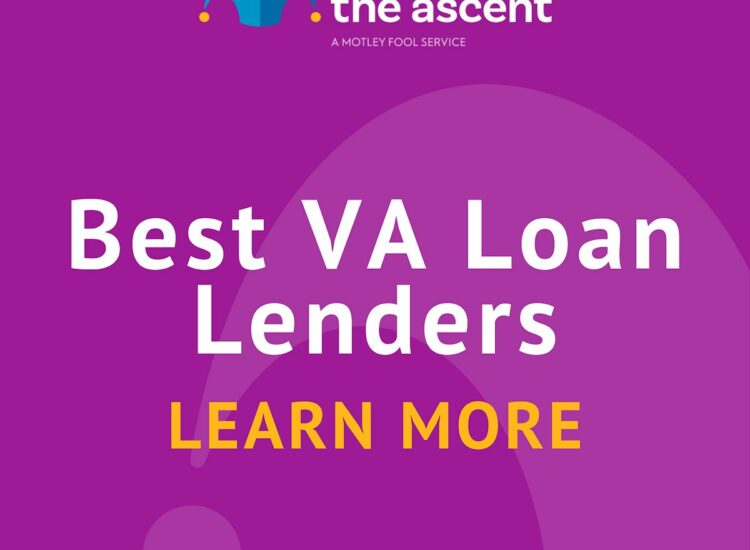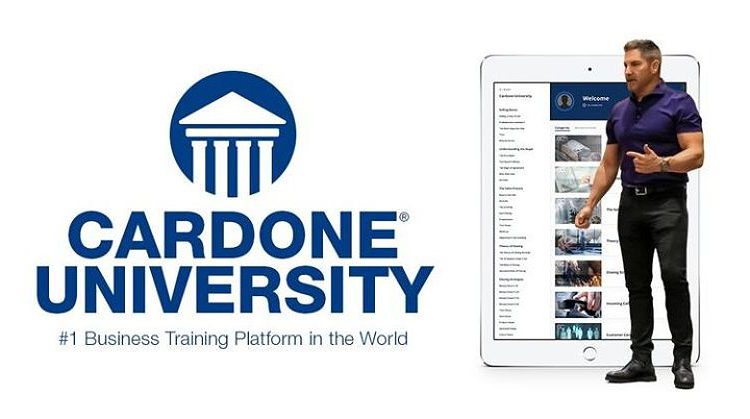Securing a home is a significant financial hurdle for many, especially first-time buyers. For military personnel and veterans, however, a VA loan mortgage offers a unique pathway to homeownership. This program, while beneficial, has its complexities, including funding fees and eligibility requirements that can be daunting to navigate. Understanding these nuances is crucial for successfully leveraging this valuable resource.
Toc
Understanding VA Loan Mortgage Eligibility
To qualify for a VA loan mortgage, you must be an eligible active-duty service member, veteran, or surviving spouse. The eligibility requirements include serving at least 90 consecutive days during wartime, 181 days during peacetime, or 6 years in the Reserves or National Guard. Once you’ve met the service requirements, you’ll need to obtain a Certificate of Eligibility (COE) from the U.S. Department of Veterans Affairs (VA). This document proves your eligibility and is a crucial first step in the VA loan mortgage process.
Key Eligibility Criteria
The eligibility criteria for a VA loan mortgage can vary depending on your service history and discharge status. Generally, you must have an honorable discharge or have been discharged under conditions other than dishonorable. Additionally, surviving spouses of veterans who died in service or from a service-connected disability may also be eligible for a VA loan.
Service Requirements
- Active Duty Members: Must serve at least 90 consecutive days during wartime.
- Veterans: Must serve at least 181 days during peacetime.
- Reservists and National Guard: Must have served for at least 6 years.
Discharge Status
An honorable discharge is typically required. If you’ve been discharged under conditions other than dishonorable, you may still qualify, but it’s essential to check with the VA for specific circumstances.
Surviving Spouses
Surviving spouses may be eligible for a VA loan if they meet specific criteria. They must not have remarried and must be the surviving spouse of a veteran who died in service or from a service-connected disability.
Obtaining a Certificate of Eligibility (COE)
Obtaining a COE is a straightforward process. You can apply for your COE online through the VA’s eBenefits portal, by submitting a VA Form 26-1880 to the VA, or by working with a VA-approved lender who can help you navigate the process. The COE serves as proof of your VA loan eligibility, and it’s a crucial document that lenders will require when you apply for your mortgage.
Obtaining a COE typically takes between a few days and several weeks, depending on your application method. If you have previously used your VA loan benefit, you may need to provide additional documentation to verify your eligibility.
Exceptions and Special Circumstances
There are exceptions and special circumstances that may affect eligibility. For instance, if you were discharged for medical reasons, you might still qualify for a VA loan. Additionally, veterans who have previously used their VA loan benefit and have repaid their loans in full may be eligible for a second use of their entitlement.
For a detailed understanding of your eligibility, including any exceptions, it’s advisable to consult the VA website or speak with a knowledgeable VA-approved lender.
Advantages of a VA Home Loan Mortgage
VA loan mortgages offer several distinct advantages over conventional loans, making them an attractive option for first-time and repeat homebuyers with military ties.
No Down Payment
One of the most significant benefits of a VA loan mortgage is the ability to purchase a home with no down payment. This can be a game-changer for those who don’t have the funds for a large upfront payment, helping to make homeownership more accessible. By avoiding the need for a down payment, VA loan borrowers can preserve their savings for other expenses, such as home improvements or emergency funds.

In contrast to the average down payment of 12% for conventional loans in 2023 (according to the National Association of Realtors), a VA loan allows veterans to purchase a home with zero down payment. However, while a zero-down-payment option is attractive, remember that higher loan amounts mean higher total interest paid over the life of the loan. This needs to be factored into your financial planning.
No Private Mortgage Insurance (PMI)
Unlike conventional loans, VA loan mortgages do not require private mortgage insurance (PMI), even if you put down less than 20% of the home’s value. This can lead to significant long-term cost savings, as PMI can add hundreds of dollars to your monthly mortgage payment. The elimination of PMI is a significant advantage for VA loan borrowers, as it can make their monthly housing costs more manageable.
Competitive Interest Rates
VA loan mortgages often come with lower interest rates compared to conventional loans, helping to keep your monthly payments more affordable. For instance, in Q3 2023, Freddie Mac’s Primary Mortgage Market Survey showed an average 30-year fixed-rate mortgage at approximately 7%. A veteran might secure a VA loan with a rate 0.5% lower, at 6.5%, resulting in significant long-term savings. Interest rates are dynamic and influenced by broader economic factors, so it’s crucial to shop around and compare offers from multiple VA-approved lenders to ensure you’re securing the best possible rate at the time of your application.
More Lenient Credit Requirements
VA loans may be more accessible to borrowers with less-than-perfect credit scores, as the qualification criteria are generally more lenient than those for conventional loans. While lenders will still evaluate your creditworthiness, the VA loan program recognizes the unique circumstances and challenges that military members and veterans may face, potentially making it easier for them to secure financing.
Flexible Underwriting Guidelines
In addition to these key benefits, VA loan mortgages also offer flexible underwriting guidelines, the ability to finance closing costs, and the potential for streamlined refinancing options down the line. These features make VA loans an attractive choice for those looking to achieve homeownership.
1. https://goldnews24h.com/archive/5154/
2. https://goldnews24h.com/archive/5117/
3. https://goldnews24h.com/archive/5118/
Understanding the Trade-offs
While the no-down-payment, PMI-free, and competitive interest rate advantages of VA loans are substantial, there are some trade-offs to consider. The VA funding fee, which ranges from 1.4% to 3.6% of the loan amount, is one such cost that can add to the overall expense. Additionally, the lack of a down payment means a higher loan amount, leading to more interest paid over the life of the loan. It’s crucial to carefully evaluate your financial situation and long-term goals to determine if the benefits of a VA loan outweigh these potential drawbacks.
VA Loan Limits
While VA loans do not have a maximum loan amount, they do have limits that vary by county. These limits determine how much of the loan the VA will guarantee. If you exceed these limits, you may still be able to obtain a VA loan, but you will need to make a down payment on the amount that exceeds the limit. In most areas, the limit is $726,200, but it can be higher in certain high-cost areas.
The process of applying for a VA loan mortgage involves several steps, but with the right guidance, it can be a smooth and efficient experience. Here’s a detailed breakdown of the application process.
Getting Pre-Approved
The first step in the VA loan mortgage application process is to get pre-approved. This involves working with a VA-approved lender to provide information about your finances, including your income, assets, and credit history. The lender will then assess your eligibility and provide you with a pre-approval letter, which can strengthen your position as a buyer and demonstrate to sellers that you’re a serious and qualified candidate.
During the pre-approval process, the lender will review your COE and verify your eligibility for a VA loan. They’ll also evaluate your debt-to-income ratio, credit score, and other factors to determine the maximum loan amount you can qualify for. Obtaining a pre-approval letter is a crucial step, as it can give you a clear understanding of your borrowing power and help you focus your home search on properties within your budget.
Finding a VA-Approved Lender
Not all lenders are authorized to offer VA loan mortgages, so it’s essential to find a VA-approved lender. These lenders have the necessary expertise and familiarity with the VA loan program to guide you through the application process effectively. You can search for VA-approved lenders through the VA’s Lender Lookup tool or by asking your real estate agent for recommendations.
When comparing VA-approved lenders, be sure to consider factors such as interest rates, fees, customer service, and the lender’s experience with VA loans. It’s also a good idea to get quotes from multiple lenders to ensure you’re getting the best possible deal.
Gathering Necessary Documents
To apply for a VA loan mortgage, you’ll need to provide a variety of documents, including your COE, pay stubs, tax returns, and other financial information. Gathering these documents in advance can help streamline the application process and ensure a smoother transaction.
Home Search and Offer
Once you’ve been pre-approved and found a VA-approved lender, you can begin your home search. When you find a property that meets your needs, work with your lender and real estate agent to submit a competitive offer.

Closing the Loan
The final step in the VA loan mortgage process is closing the loan. This involves signing the necessary paperwork and completing the transaction. With the help of your lender and real estate agent, this process can be quick and efficient.
Understanding VA Loan Funding Fees
One of the costs associated with a VA loan mortgage is the VA funding fee. This one-time fee, which ranges from 1.4% to 3.6% of the loan amount, helps to support the VA loan program. You can choose to pay the funding fee at closing or have it included in your loan, which will increase the overall amount you’re borrowing and the total interest paid.
Funding Fee Structure
The VA funding fee percentage varies based on several factors, including the type of loan, your military service history, and whether you’re a first-time or repeat VA loan borrower. For example, active-duty service members typically pay a lower funding fee compared to those who are reservists or National Guard members.
Here’s a breakdown of the funding fee structure:
- First-time VA loan users: 2.3% of the loan amount.
- Subsequent VA loan users: 3.6% of the loan amount.
- Reserves and National Guard members: 2.3% for first use, 3.6% for subsequent uses.
- Disabled veterans: May be exempt from paying the funding fee.
Payment Options for the Funding Fee
You have options when it comes to paying the VA funding fee. You can pay it upfront at closing, which allows you to avoid financing it into your loan. Alternatively, you can choose to roll the funding fee into your loan amount. While this may increase your monthly payments, it can make it easier to manage your upfront costs.
Impact of Financing the Fee
If you decide to finance the funding fee into your loan, it’s essential to understand how this will affect your overall loan amount and interest paid. For example, if you’re purchasing a $300,000 home and choose to finance a 2.3% funding fee, your loan amount will increase to $306,900. While this spreads the cost over the life of the loan, it also means you’ll pay interest on that additional amount, leading to higher overall costs.
Refinancing Your VA Loan
If you’re already a VA loan borrower, you may be considering refinancing options. Refinancing your VA loan can offer several benefits, including lower interest rates, reduced monthly payments, and the opportunity to access cash for home improvements or other expenses.
Eligibility Requirements for VA Loan Refinancing
To refinance a VA loan, you typically need to meet certain eligibility requirements. These may include:
- Being current on your mortgage payments.
- Having a satisfactory credit score.
- Meeting the lender’s debt-to-income ratio guidelines.
Benefits of Refinancing
Refinancing your VA loan can provide several advantages:
- Lower Interest Rates: If current market rates are lower than your existing rate, refinancing can save you money over the life of the loan.
- Shorter Loan Term: You may choose to refinance into a shorter loan term, allowing you to pay off your mortgage faster and save on interest.
- Access to Cash: A cash-out refinance allows you to take out a new loan for more than you owe on your existing mortgage, providing cash for home improvements, debt consolidation, or other expenses.
Types of VA Loan Refinancing Options
There are two primary types of VA loan refinancing options:
-
Interest Rate Reduction Refinance Loan (IRRRL): Also known as a VA streamline refinance, this option allows you to refinance your existing VA loan with minimal documentation and no appraisal required. It’s designed to help you secure a lower interest rate and reduce your monthly payments.
-
Cash-Out Refinance: This option allows you to refinance your existing mortgage and take out cash based on your home’s equity. It’s ideal for homeowners looking to access funds for home improvements, education expenses, or debt consolidation.
The Process of Refinancing a VA Loan
Refinancing a VA loan involves several steps similar to the initial loan process:
- Find a VA-approved lender: Just like with your original loan, you’ll need to work with a VA-approved lender.
- Gather necessary documents: You’ll need to provide financial documentation, including proof of income, assets, and your current mortgage statement.
- Complete the application: Submit your application to the lender, who will review your financial situation and determine your eligibility for refinancing.
- Close the loan: If approved, you’ll close on the new loan, and the old loan will be paid off.
Frequently Asked Questions
Q: Can I use my VA loan benefit more than once?
A: Yes, you can use your VA loan benefit more than once, provided certain conditions are met. You’ll need to have sold your previous property or paid off the existing VA loan in full. As long as you haven’t exceeded your VA loan entitlement, you can use your benefit again to purchase a new home.
Q: What types of properties are eligible for a VA loan?
A: VA loans are primarily for primary residences, but there are some exceptions. In addition to single-family homes, VA loans can be used to purchase condominiums, townhouses, and even multi-unit properties (up to 4 units) as long as you occupy one of the units as your primary residence.
Q: What happens if I can’t make my mortgage payments?
A: The VA offers several assistance programs to help prevent foreclosure for veterans and service members who are struggling to make their mortgage payments. If you’re facing financial hardship, it’s crucial to reach out to the VA or your lender as soon as possible. They can work with you to explore options such as loan modifications, forbearance, or even a VA-backed refinance to help you stay in your home.
Q: How does a VA loan compare to a conventional mortgage?
A: The key differences between a VA loan and a conventional mortgage include the lack of a down payment requirement, no private mortgage insurance (PMI), and potentially lower interest rates for VA loans. Conventional loans typically require a down payment of at least 20% to avoid PMI, and their interest rates may be higher than VA loan rates. Additionally, VA loans often have more lenient credit requirements compared to conventional mortgages.
Q: How long does the VA loan application process take?
A: The timeline for the VA loan application process can vary depending on several factors, such as the lender’s processing times, appraisal delays, and the complexity of your financial situation. On average, the process can take anywhere from a few weeks to a few months. It’s important to work closely with your VA-approved lender and provide all the necessary documentation upfront to help streamline the process and minimize delays.
Q: What should I do if I want to refinance my VA loan?
A: If you’re considering refinancing your VA loan, start by researching VA-approved lenders and comparing their rates and terms. Determine which refinancing option—IRRRL or cash-out refinance—best suits your needs. Gather your financial documents and reach out to your chosen lender to begin the application process.
Conclusion
A VA loan mortgage can be a powerful tool for veterans seeking homeownership. Understanding the eligibility requirements, benefits, and application process is crucial. By carefully reviewing the information provided and taking advantage of the resources available, veterans can confidently navigate the path to owning a home.
One of the key advantages of the VA loan program is the ability to purchase a home with no down payment, making homeownership more accessible for those who may not have the funds for a large upfront investment. Additionally, the lack of private mortgage insurance (PMI) and the potential for lower interest rates can lead to significant long-term cost savings.
While the VA loan process may involve additional requirements, such as obtaining a Certificate of Eligibility and working with a VA-approved lender, the benefits often outweigh the added steps. By partnering with the right lender and real estate agent, you can navigate the application process with confidence and leverage the unique advantages of a VA loan mortgage.
If you’re a veteran or active-duty service member, don’t let the complexities of the VA loan program deter you from exploring this powerful homeownership opportunity. Connect with a VA-approved lender today to learn more about your eligibility and start your journey towards achieving the American Dream through homeownership.
1. https://goldnews24h.com/archive/5155/
2. https://goldnews24h.com/archive/5118/
3. https://goldnews24h.com/archive/5152/









